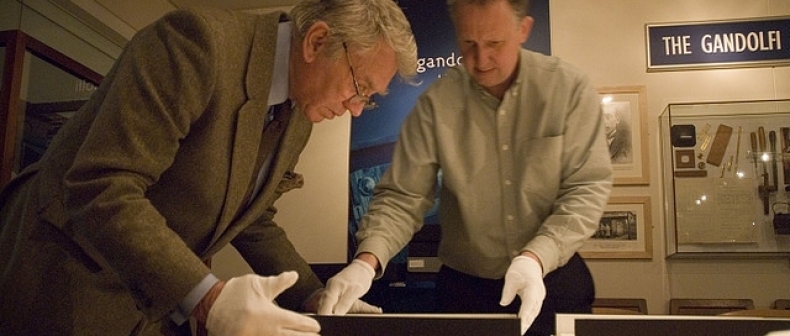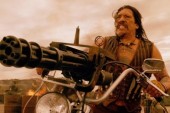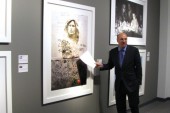
Image: Flickr
If you’ve ever wondered about the importance of the sort of photographs that have come to be known as “graphic,” and thought that they might actually be important to the body politic, there’s a movie you should see.
It’s called McCullin, a new documentary about Don McCullin, an English photojournalist who spent the better part of the 60s and 70s in spots like Vietnam and Nigeria becoming one of the most moving war photographers on the planet.
His photograph for the Sunday Times magazine of a Biafran mother, with her starving infant at her desiccated, flaccid breast became a rallying point, thanks to some canny poster-making and distribution by McCullin’s friend Francis Wyndham, in the British movement to end that Nigerian civil war and feed the appalling number of dying children.
It’s the kind of picture many folks today would call “exploitive” or “gratuitous,” affecting liberal or conservative disapproval to mask a simple disinclination to being discomfited over their morning coffee. It’s not that society has ever generally liked the sorts of images McCullin used to take and the Sunday Times and others used to publish. In fact, there seems always to have been a large part of the reading and viewing public that think these sorts of images, and the sort of news they support and convey, are an unpleasant and unnecessary impingement on the living rooms and smartphones of the nation.
But there was a time, not a long time, roughly lining up with McCullin’s wartime career, when a confluence of photographers, editors and publishers sought and got the forbearance of their readers to show them what violence and famine look like in individual, human terms.
In 1981, Rupert Murdoch bought the Times and decided to put his thumb on the always precarious balance between informing and entertaining. He may have been a sign of the times, or he may have changed the industry; the effect has been the same.
“The world has become obsessed with celebrities and people who wear false teeth and high heels,” McCullin tells me after the recent world premiere of the (mostly) final cut of the movie at HotDocs. This sounds like typical fogey speak of the kids-today variety, but having just watched the movie, during which the camera spends quite a bit of time capturing streams of his verbal eloquence that rival his pictures. He may be 76, but a fogey he is not, so I ask him what he means.
“What I’m saying is that we live in this plastic world of human beings right now. They seem to be the people who falsify themselves with all kinds of intrusions on the natural body. These are the kind of people the newspapers are selling to now, they don’t want injured people,” he said. “That kind of put me out of business really.”
We’ve always been interested in demigods, whether they’re royalty, clergy or the marginally more mythological likes of Herakles and Gilgamesh. In the realm of journalism, Punch was filled with them as early as the 1840s, and Confidential took it to still-unmatched heights of luridity in the 1950s. But these were always sideshows. Even when People magazine got going in 1974, it could safely be placed in the entertainment category, something quite distinct from politics, religion and foreign aid.
But if I mention Bono today, you’re going to think U2, you’re going to think sunglasses, and you’re going to think Davos and Africa. More distressingly, if I mention Haiti, I figure Sean Penn and Oprah would figure pretty prominently on their list of first-blush word associations. Angelina Jolie is the face of Southeast Asian aid, Brad Pitt the face of continuing recovery efforts in New Orleans, and we’re long past the point at which mere pictures of starving children were enough to get those dollars flowing. If an agency really wants to ensure cash flow, they’ve got to stick one of those babies in the arms of someone familiar and, for the most part, quite pretty. It’s a visual vocabulary that’s developed over the past several decades, and one there are any number of justifications for. We can admire Pitt and Penn for using their spotlights for good, and Jolie and Madonna for helping to de-stigmatize foreign adoptions. But the fact remains that these increasingly normalized “falsified” looks and images, as McCullin calls them, are more and more necessary for anyone to pay attention to anything. The contrast between what we’re used to — people with nice noses and perfect teeth — and what people in distress look like, is just too great for many of us to process. We turn away, claiming impropriety or gratuity.
But newspapers and magazines have the power, and arguably the responsibility, to stop us from turning away if they like.
“I think you can change the meaning of a photograph with words and context,” said Sir Harold Evans, McCullin’s old boss, former editor of the Sunday Times and general journalistic legend. “Don’s a writer, although he denies it. The context, which makes sense, is you get two levels when it’s in a magazine or newspaper, rather than just taking it off Google Images. The possibility of comprehension, understanding, of getting meaning out of this, I think that’s very important. We remember these still images: Trigger images of emotions and everything else, they can’t be trigger images of any comprehension, unless you say the Phalangists were standing for this, the Jews were standing for that, the Muslims were standing for this.
“You can get something out of a photograph,” he said, sitting at a little table with McCullin and the documentary’s director, Jacqui Morris, beside the popcorn concession at the Lightbox. “My own view, frankly, is there’s nothing more powerful.”
That Google Images shot is important. In raw terms, we have access to far more images of violence and the results of disaster of all sorts than we ever have. Type “beheading,” “Iraq casualties pictures” or even “car crash gore” into your favourite search engine and you’ll see stuff McCullin would never have had the stomach to take, nor Evans to publish. But without the curation, the editing, what McCullin calls the “feeling” behind good photojournalism and, possibly most important, the words to frame the image, the effect can be random, as likely to harden a heart as tenderize it.
“War is just word,” Sir Harold said. “And a headline. It requires an imagination very, very few people have to take from words themselves and imagine the scene of what’s really happening. You need the testimony of photographs. We haven’t got the imagination.”
I wouldn’t lay a bet on print getting back into the McCullinesque picture business, but given the relatively few limitations on web publishing, I don’t think it would be a bad idea at all for some of the more credible web based publications to take a look through McCullin’s portfolio and start to think about cultivating a few more talents like his.
But until they do, McCullin director Morris makes a good and encouraging point.
“You’re getting very few good investigative stories now,” she said. “Documentaries are taking over that. There are proper, well-researched documentaries bringing to light injustices. In a way that’s a really good thing: it can reach a really wide audience; in another way, it isn’t as powerful as a newspaper.”
Maybe nothing ever will be quite as powerful in quite the same way as the 20th-century newspaper was, with its ability to communicate to the majority of a population at the same time and drive the zeitgeist as it did. Or maybe someone’s already working on an app for that. Whatever the case ends up being, you could do worse, for the moment, than dialing up a few docs on Netflix and browsing through some of McCullin’s old, fresh, raw, heart-slicing images.
________
Bert Archer writes for Toronto Standard. Follow him on Twitter: @bertarcher.
For more, follow us on Twitter: @TorontoStandard, or subscribe to our newsletter.














